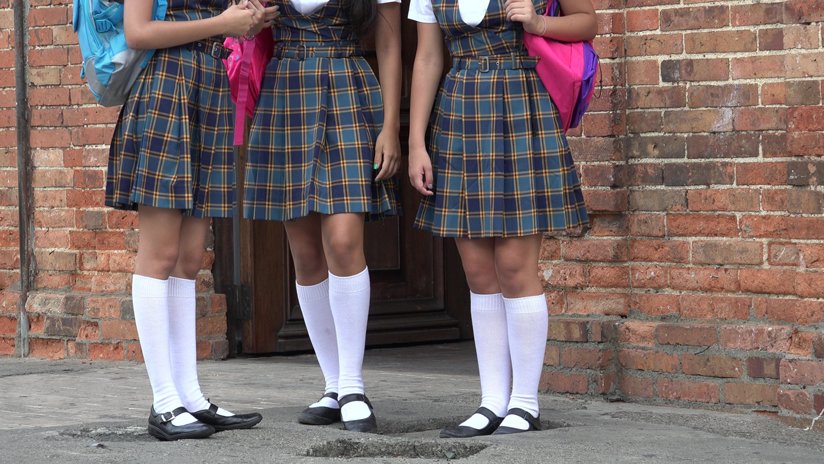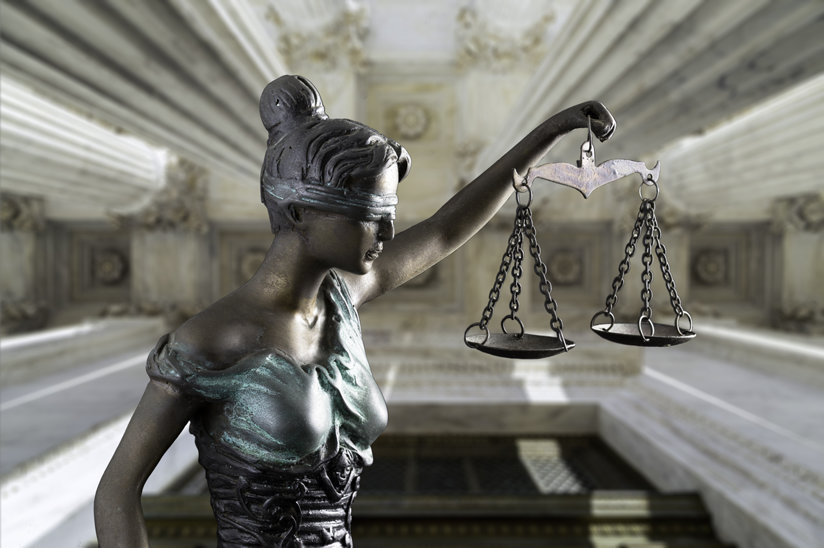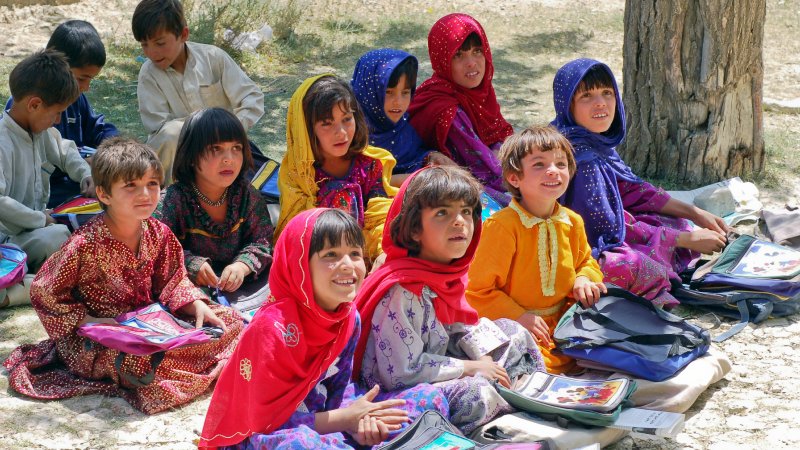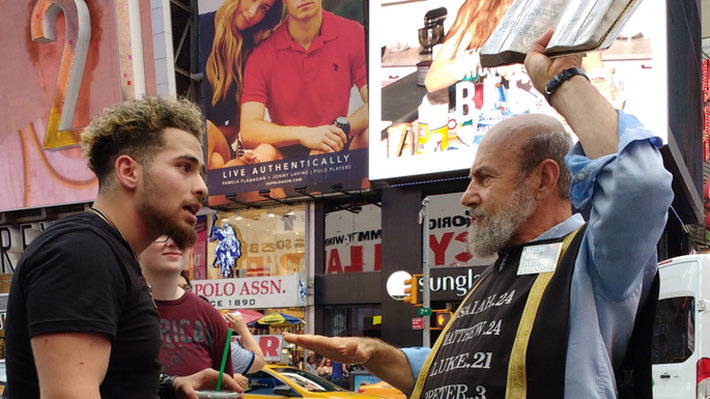Supreme Court Reviews Scholarships for Religious Schools
The U.S. Supreme Court will shortly decide whether the State of Montana can prevent the use of public funds for any educational institution controlled by a religious organization.
The plaintiffs who brought the case to the Supreme Court, Kendra Espinoza, a Montana single mother, and two other parents who send their children to a Christian school, claim they are being discriminated against because they are not eligible for scholarships under the same terms as all other parents as a result of sending their children to a religious school.

The Montana Department of Revenue ruled in December 2015 that religious schools are not eligible for scholarships based on a provision in the Montana Constitution (originally from the 19th century) which was part of a systematic effort to suppress Catholic parochial schools and force their children into public ones.
Many people who advocate on behalf of the plaintiffs hope that the Supreme Court will invalidate these provisions for all states and put an end to a relic of the United States’ troubled history of anti-Catholicism.
Prejudice against Catholics was imported from Protestant England in colonial times, but really flared up in the 1840s, when large numbers of Irish and German Catholics immigrated to the United States.
A combination of legal and social pressures have resulted in completely secularized schools which are permitted to teach about religion, but not teach religious tenets.
Catholic children, in particular, faced severe oppression when they tried to enter a public school system which had evolved since the early 1800s and had come to teach a generalized version of Protestant Christianity as part of its curriculum.
School authorities did not consider that they were enforcing religious beliefs on their students since they taught principles that the vast majority of Americans shared. Unfortunately for young Catholics, a point of agreement among Protestants was that Catholicism, often referred to in textbooks as “popery” (a denigrating term in itself), was a perversion of true Christianity. According to scholars, textbooks from that period were filled with disparagement of the Catholic faith and its members. In addition, the public schools used the King James version of the Bible, which the Catholics did not accept. In these schools, Catholic children were subject to discipline as well as ridicule for asserting their faith. In one infamous incident, a Boston schoolboy was beaten for half an hour for refusing to recite the Protestant version of the Ten Commandments.
As a result of this discrimination, Catholics created their own school system which in turn brought about even more hostility from those already prejudiced against them. Probably the most extreme action against their separate system of education was a 1922 Oregon law that would have effectively banned Catholic schools by ordering that all children attend public schools—a law which the Supreme Court rightfully declared unconstitutional a few years later.
School funding was always a primary issue. Catholics were paying taxes to support education for other people’s children in public schools while also having to separately finance their own schools. They thought it only fair that some government education money should come to them.
Meanwhile, vigorous opposition to public financing of parochial schools resulted in the proposed “Blaine Amendment” (named after its author) to the U.S. Constitution in the 1870s, which would have prohibited the use of any taxpayer money intended for education from going to any religious organization. The amendment was defeated at the federal level, but “Blaine Amendments” passed in many states, including Montana, and the laws have remained on the books ever since.
While the “Blaine Amendments” have stayed the same for almost a century and a half, the relationship between religion and public schooling has changed dramatically. Schools must now teach students from a wide variety of religious backgrounds alongside children of the roughly 20 percent of the population that is religiously unaffiliated.
A combination of legal and social pressures have resulted in completely secularized schools which are permitted to teach about religion, but not teach religious tenets. Many parents who want a religious upbringing for their children have looked elsewhere, leading to the present case.

I can’t speak for parents like Kendra Espinoza who want a religious upbringing for their children, but if I were in their position I would be very deeply disturbed that, while any presentation of religious ideas is severely constrained, there are no such restrictions when it comes to promoting psychological and materialist theories of human behavior and imposing them on students, though these are frequently at odds with the principles of most religions.
To quote from an opponent of Montana’s current law, “Montana public schools are teaching mental and behavioral health and social and emotional thoughts, beliefs, attitudes and practices to students in their classrooms all day, every day.” He goes on to criticize their abandonment of any theistic or religious standards and gives as examples the 1995 Montana Behavioral Initiative, described by school officials as “creating behavioral supports and a social culture” and a 2016 program that “provides for thorough inculcation of children in thoughts, beliefs attitudes and practices pertaining to their mental and behavioral health.”
Providing public education free of religious and ideological bias is never going to be easy.
Another psychological tool in use in Montana schools is the PAX Good Behavior Game, which describes itself as, “an Evidence-based Practice that … By strengthening inhibition, extending self-regulation, and improving social emotional scaffolding … creates changes in electrical, neurochemical, neural connectivity … that strengthen inhibition, extend self-regulation, and improve social emotional scaffolding.” In other words, moral and ethical conduct comes not from understanding ourselves or our relationship to God but from our “neural connectivity.”
From the above, it can be seen that the Blaine Amendment, originally intended not to favor one religion over another, is now used, by virtue of the Montana Department of Revenue Ruling, to block all efforts to teach any sort of religious view of humanity or God-given reason for being moral and ethical, while enforcing materialism with a heavy hand. It’s easy to see why people with strong religious beliefs want schools of their own. Just as 19th century Protestants wrongly imposed their beliefs and practices on Catholics, materialists now have free rein to impose their ideology on every child who walks into the public-school system. Yet, how is the belief system of the materialists any more based on demonstrable truth than the belief systems of religions? Materialists certainly can’t prove their assumption that a human being is a soulless, electrically-motivated piece of biochemical machinery lacking any moral or ethical duty to a higher power.
Providing public education free of religious and ideological bias is never going to be easy. People are all too inclined to think that their prejudices are fact, and to demand that they be taught to others as such, which was true 200 years ago and is sadly still true today. Over time, hopefully more people will overcome such tendencies and develop the wisdom and breadth of understanding so that our education system can communicate a wide range of ideas while allowing members of the next generation to work out for themselves what to believe. In the meantime, in my view, allowing scholarships for religious schools will help level the playing field and should be encouraged.










